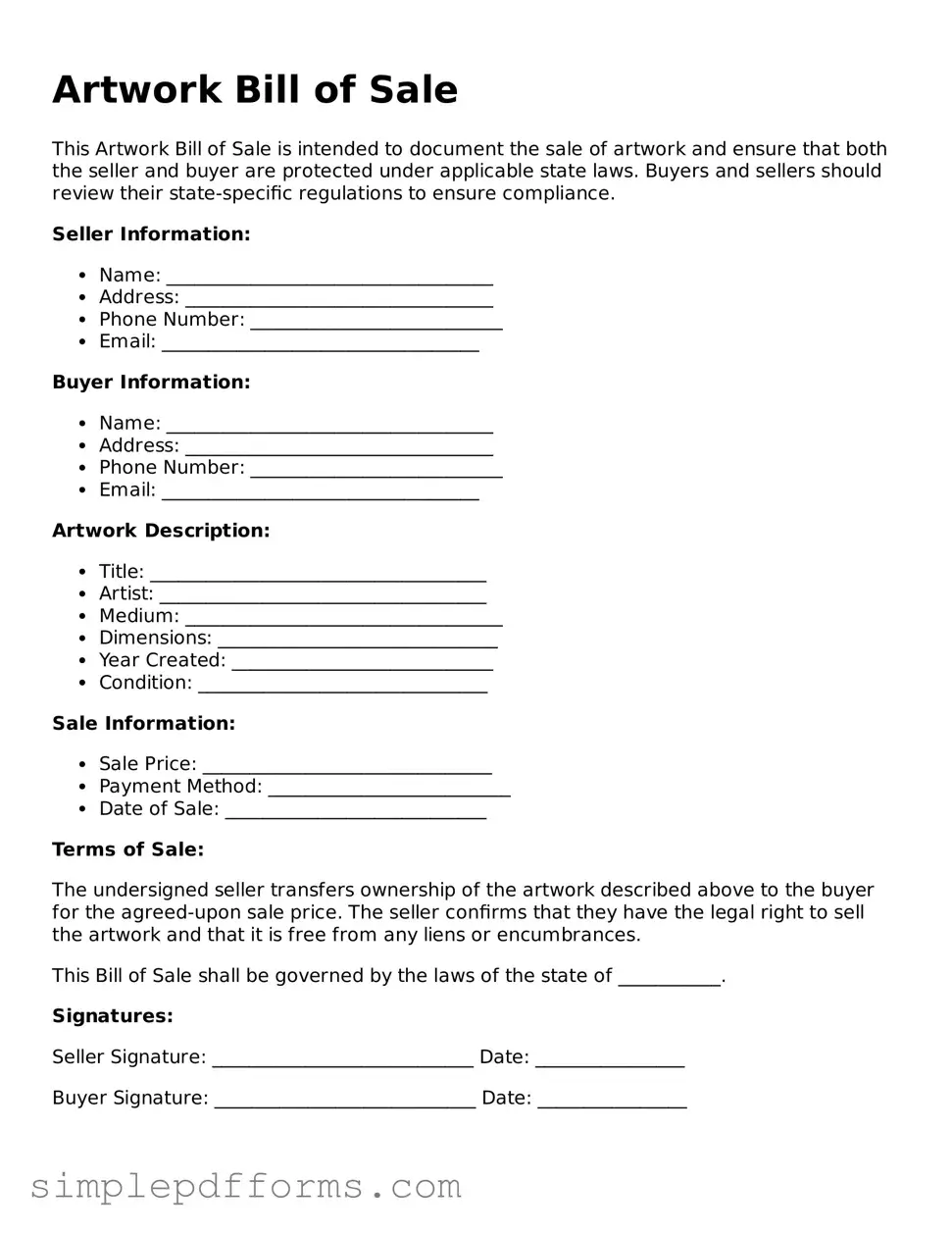Filling out an Artwork Bill of Sale can be straightforward, but many people make common mistakes that can lead to confusion or even disputes later on. One frequent error is failing to provide complete contact information. Buyers and sellers should include their full names, addresses, and phone numbers. Omitting any of this information can create difficulties in future communications.
Another mistake is not accurately describing the artwork. It’s essential to include details such as the title, artist's name, medium, dimensions, and any unique identifiers like a serial number or provenance. A vague description can lead to misunderstandings about what exactly is being sold.
People often overlook the importance of including the sale price. This figure should be clearly stated to avoid ambiguity. If the price is left blank or written incorrectly, it may lead to disputes about the agreed amount.
Not signing the document is a common oversight. Both the buyer and seller must sign the Artwork Bill of Sale for it to be legally binding. Without signatures, the document holds no legal weight, which can complicate ownership claims.
Another frequent issue arises from not dating the document. Including the date of the sale is crucial. It establishes when the transaction took place and can be important for record-keeping and legal purposes.
Some individuals fail to keep a copy of the completed bill. After signing, both parties should retain a copy for their records. This ensures that both the buyer and seller have proof of the transaction should any questions arise in the future.
In addition, people sometimes neglect to mention any warranties or guarantees associated with the artwork. If there are specific conditions regarding the sale, such as a return policy or authenticity guarantee, these should be clearly outlined in the document.
Another mistake is not checking for typos or errors before finalizing the document. Simple mistakes in names or details can lead to significant issues later. It’s always wise to review the entire form carefully.
Finally, some individuals might forget to consult local laws regarding the sale of artwork. Different states may have specific regulations or requirements for a Bill of Sale. Being aware of these can help ensure that the document is valid and enforceable.
